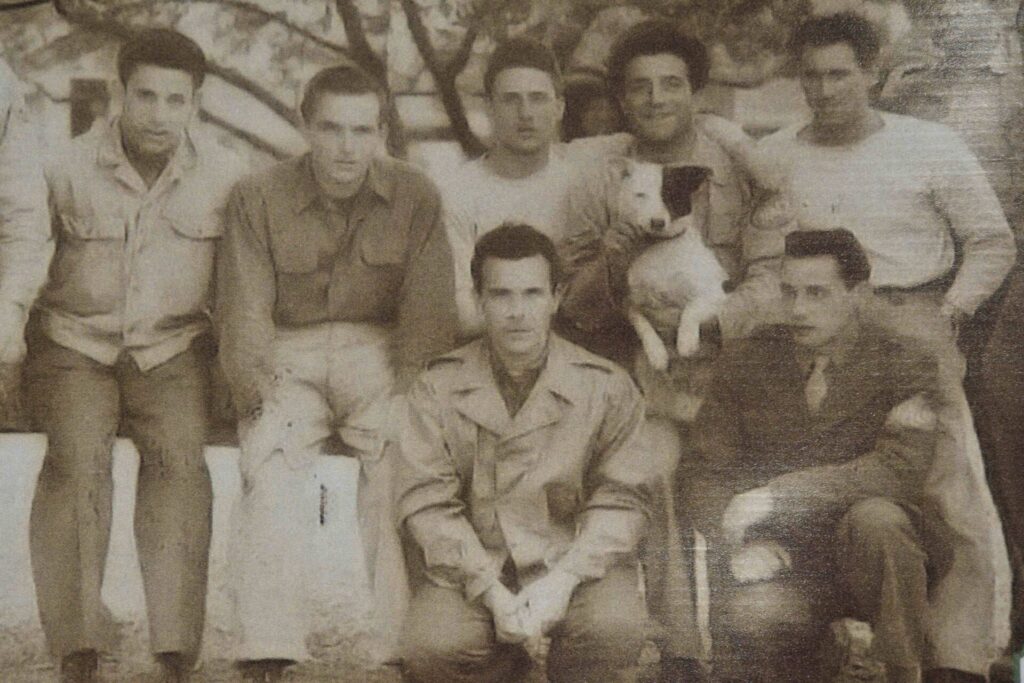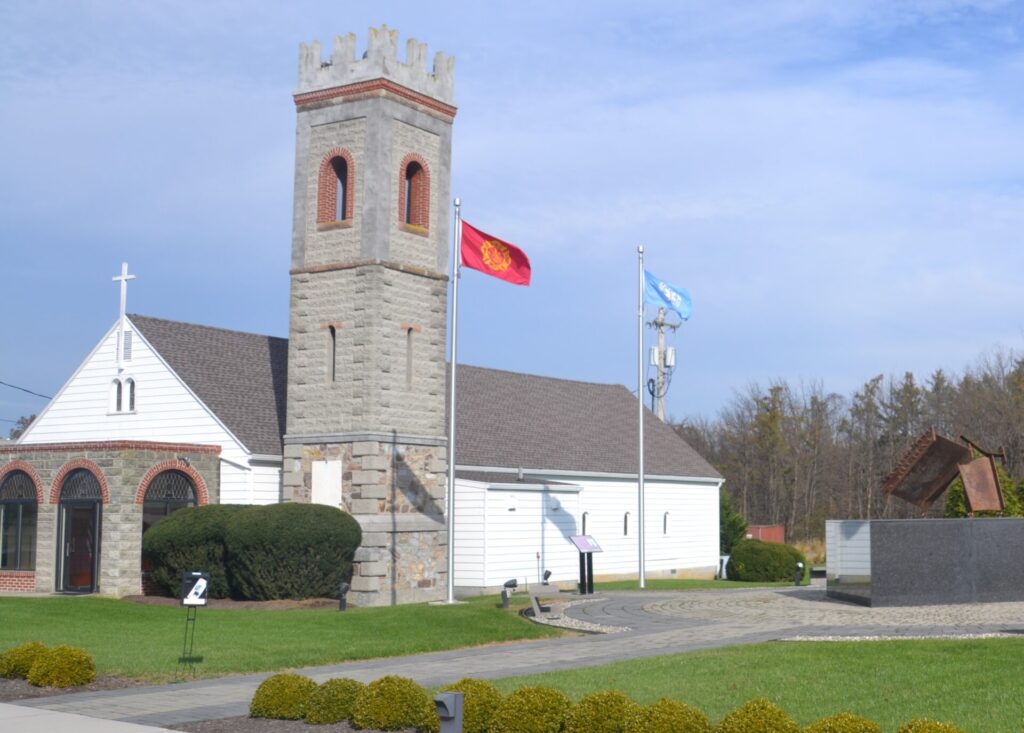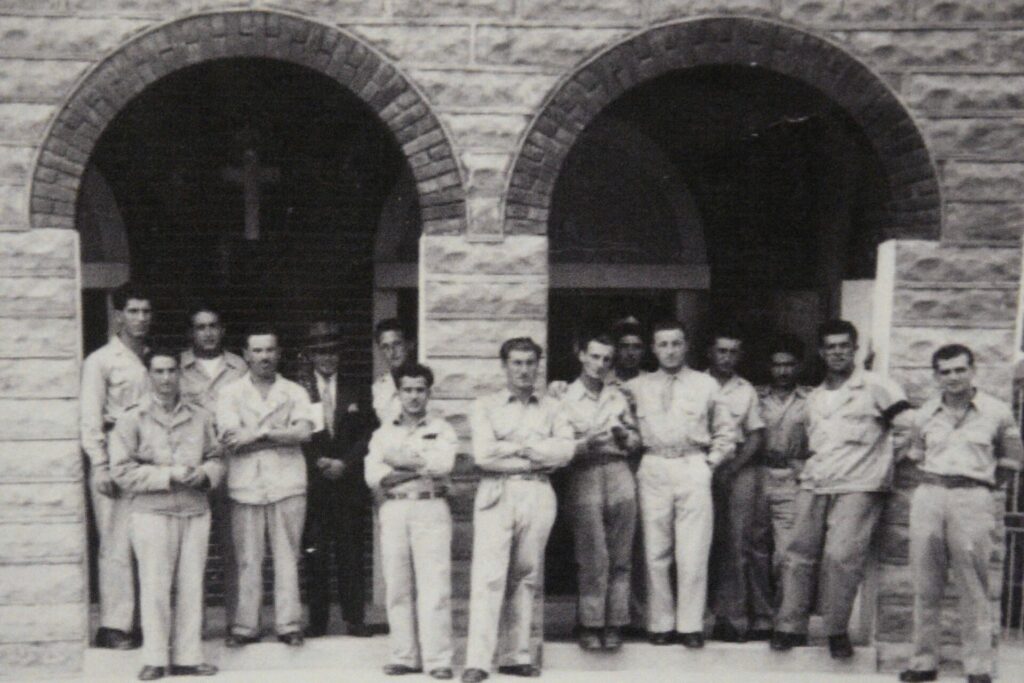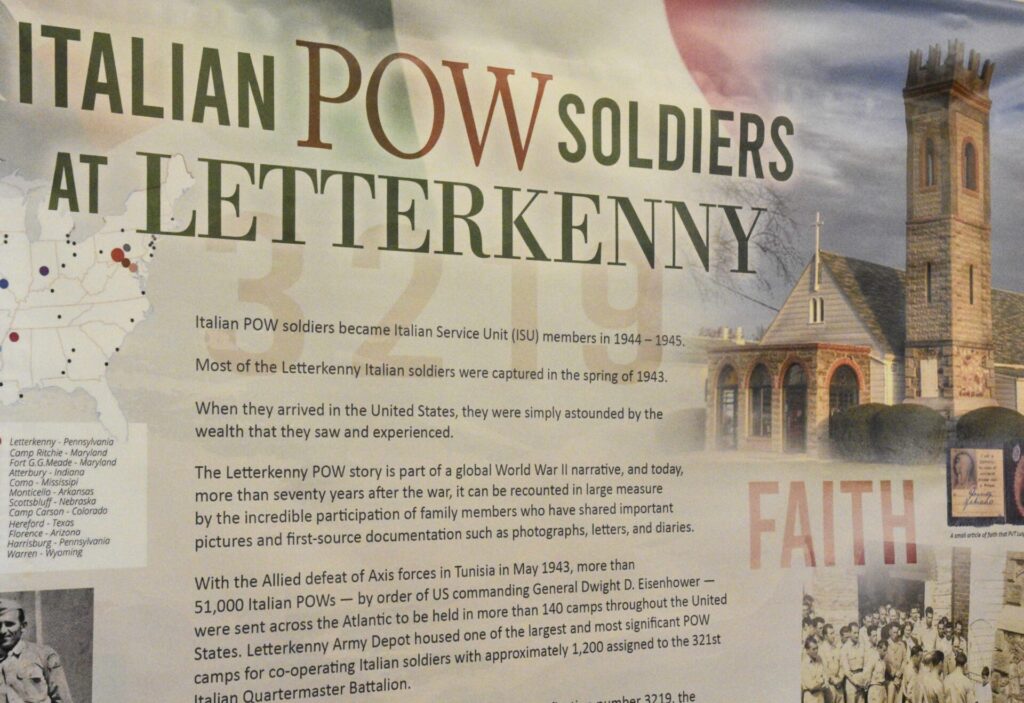During World War II’s catastrophic era, a story of unlikely cooperation and enduring friendship between once-enemy combatants developed in Franklin County.
When a group of Italian POWs arrived at Letterkenny Army Depot in 1944, these soldiers agreed to help the Americans and their allies defeat Nazi Germany. Their story is featured in a new documentary, which celebrated its world premiere on Friday, Sept. 6, in Chambersburg.
The film, “Fedelta. Soldier. Prisoner.” was screened at the Capitol Theatre to a near-capacity crowd. Creator Stephen Mancini thanked the assembled audience as he introduced his documentary. His enthusiasm and pride for the completed project was evident. Mancini announced that in a few weeks the film also will be onscreen in Italy.
Mancini is a Pittsburgh native with Italian ancestry. He spent 20 years in the U.S. military and during his tenure served in Asia, California and at the Pentagon. After his military retirement, he started a film production company and is also an assistant professor of computer and information systems at Robert Morris University.
The road to this documentary began after Mancini’s maternal grandmother passed away. As a tribute to her heritage, he wanted to learn the Italian language. Mancini befriended an Italian-American, who later became Mancini’s mentor. Not only did he learn to speak his ancestral tongue, but Mancini was captivated by his mentor’s Italian stories.
One tale was the account of Italian POWs who came to Pennsylvania during World War II. After his mentor died, with Mancini’s military background and Italian heritage, he was seemingly pre-destined to share this period of local history. “We wanted to give this story the justice it deserves,” Mancini said. “We hope to preserve that legacy with this film.”
This is Mancini’s first documentary. A talented production team wrote, filmed and produced the project. When they began filming, that group didn’t fully anticipate the stimulating people they would meet, or the far-flung locales they would travel to, combined with discovering the deeply held emotions attached to the Letterkenny story. “This film took us places we never expected,” Mancini said.
While this POW history was known by locals beforehand, Mancini’s documentary assembles many untold stories. Then it brings them into context by highlighting the powerful connections Americans and Italians forged during this saga. This film also illustrates how these brave people overcame war’s tragedies by blending their cultures and pursuing cooperative goals.

The documentary was expertly compiled, mixing a compelling storyline with aerial footage of the Letterkenny site, a stirring musical score and engaging graphics. Numerous interviews with historians, military experts and relatives of men who served on the American and Italian sides fortify this film.
The filmmakers traveled to Italy to speak with POW descendants, who described their fathers’ and grandfathers’ wartime exploits in America. Mancini felt compelled to record these personal narratives while these Italian sons and daughters, many now in their 70s and 80s, were alive to tell them firsthand.
The film offers many touching and light-hearted moments while paying attention to the trying circumstances these soldiers faced. The men sometimes grew despondent, missing their country and families. However, viewing this documentary with an enthusiastic Chambersburg audience lightened that emotional mood and reinforced its moral as a tribute to community spirit and kindness. Seeing this production on a big screen inside the beautifully restored Capitol Theatre also added luster to the film’s premiere.

These Italian POWs weren’t ordinary men, nor were their circumstances. This group initially fought against the Americans and Allied forces in North Africa and Sicily during 1943. Fighting with substandard weapons and without adequate food or shelter, the odds were against these Italian units. Undaunted, they fought bravely.
Once captured after a succession of battle losses, these Italian POWs’ fortunes, and their nation’s alliances, evolved quickly. Italy signed an Armistice with the Allies in September 1943. Still, more than 50,000 Italian POWs were shipped to the United States, their fate uncertain.
Once imprisoned in America, with their country no longer aligned with Nazi Germany, these POWs were given an opportunity by their captors: sign an oath of allegiance to the Allied cause and cooperate with their former enemy to help defeat Hitler.
Most Italian soldiers signed up. Their cooperation resulted in comfortable living conditions and social privileges usually denied to POWs. Some 1200 soldiers arrived at Letterkenny in May 1944, one of 140 POW detention sites in the U.S. Organized in a company-sized Italian Service Unit to form the local 321st Italian Quartermaster Battalion, this important garrison force aided their new partner, the United States military.
Not only were the POWs paid for their work (80 cents per day), but they were given unsupervised leave and free time on weekends. They enjoyed visits from nearby Italian-Americans, and some soldiers received invitations to private homes. In return, the Italian POWs stocked, stored and shipped American equipment and munitions to war fronts in the European and Pacific theaters.

Letterkenny Army Depot originated only a few years earlier and was an important logistical and storage base. The POWs lived in wooden barracks there, with up to 60 men in each structure. One large building housed a barber and tailor shop, a performance space for musical events and a mess hall.
These Italian POWs were vital partners in the closing stages of the war, and most were repatriated back to Italy by October 1945. However, they left a tangible piece of their culture and talent at Letterkenny that remains today.
Looking back at those years, the POW’s hard work and fidelity forged strong ties within the military and civilian communities. Some cross-cultural friendships lasted a lifetime. Other relationships were more personal, as Italian soldiers met local gals at Franklin County dances or hosted events, fell in love and later married. Some American women moved to Italy after the war, while many Italian men returned to America to live stateside with new wives.
Once such Italian was Alfredo Tonolo. He met American Tina Norce when she came to socialize with the Letterkenny POWs. They felt an instant attraction. After Tonolo returned to Venice after the war, the two exchanged letters for four years. Alfredo eventually proposed marriage, and Tina traveled to Italy where they married. The couple returned to live in the States in 1950. Alfredo Tonolo later became a professor at Pennsylvania’s Bloomsburg University.
Many of the Italian prisoners were carpenters or masons. Inspired by their strong religious faith, they undertook an ambitious construction project at Letterkenny. After sourcing local building materials, they went to work building a chapel. In only five months, despite working full time for the war effort, they erected a lovely Italianate-style church, complete with a distinct square bell tower, curved arches and handsome brickwork. They called their project the “Chapel of Peace”.

That chapel still stands at Letterkenny, an enduring symbol of the work ethic, faith and pride of those Italian POWs, and their cooperation with their American captors. In 1995, on the 50th anniversary of its construction, Alfredo Tonolo, the Italian POW turned American citizen, gave the keynote speech during that commemoration.
Chambersburg’s community has embraced the Letterkenny POW legacy and Mancini’s documentary. The Franklin County Visitor Center in downtown Chambersburg created an exhibit in conjunction with the film titled, “Letterkenny WWII Italian Prisoners of War Experience,” which opened the same day as the film’s premier.

Through excerpts from memoirs, letters and diaries, and with still photographs and graphics, the exhibit tells many touching stories from this 1944-45 Letterkenny period. This exhibition will continue until Veterans Day, Nov. 11. This informative presentation is free and accessible during the Visitor Center’s regular business hours (explorefranklincountypa.com).
An Italian association called AMPIL, an ancestry group whose POW fathers and grandfathers returned to Italy after the war, also contributed multiple stories and resources to the visitor center exhibit and Mancini’s documentary, to bolster the emotional power of this remarkable historical period.
Away from their families and country during a period of great turmoil and stress, these long-ago POWs were given an opportunity to rejoin the world community. Most were treated with respect and dignity while in America, and although most never returned to the USA, the admiration they gained never faded.

One Italian POW, Pvt. Antonio Falanga, wrote in his memoir about his time at Letterkenny: “I sincerely believe that I spent the most beautiful days of my life there.”
America was founded on the aspirations of immigrants. It’s fitting this documentary celebrates Italians who blended into American society after the World War to live productive and happy lives here. Mancini’s film is a historical gift to Franklin County and also to all Americans and Italians. Their cultures once collided during a brutal war, but then, they wisely collaborated in a quest for future peace and harmony.






















